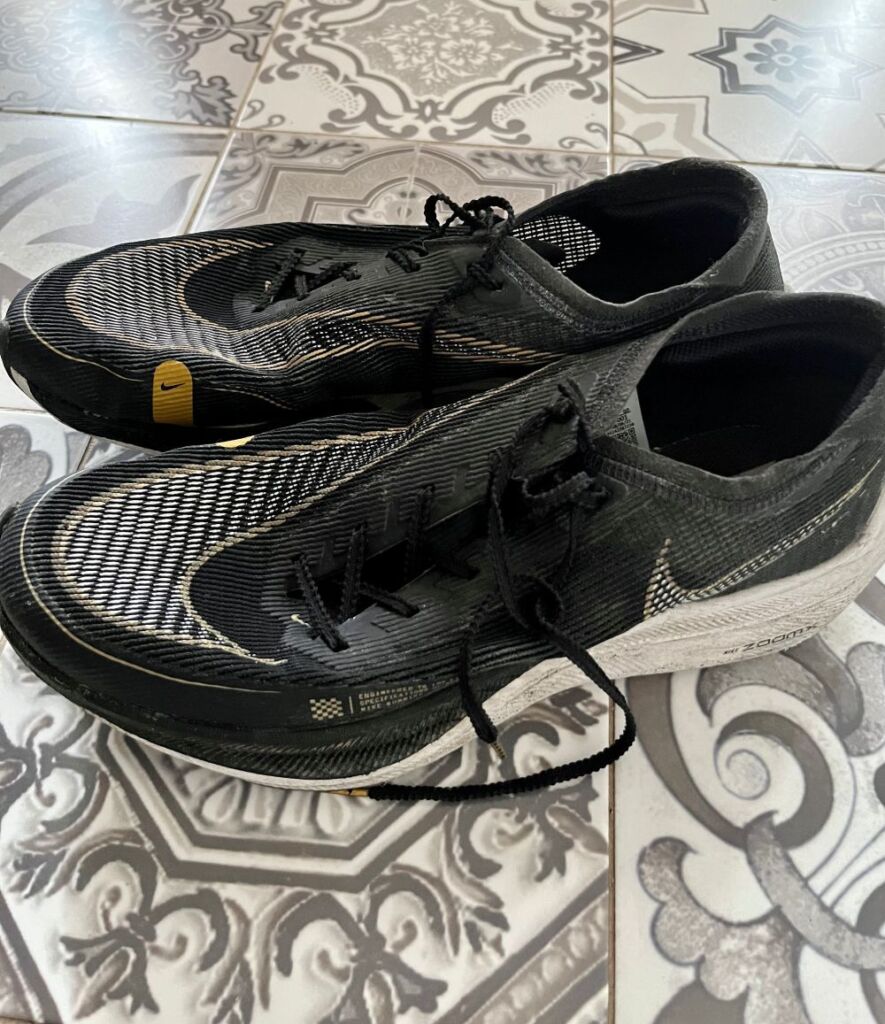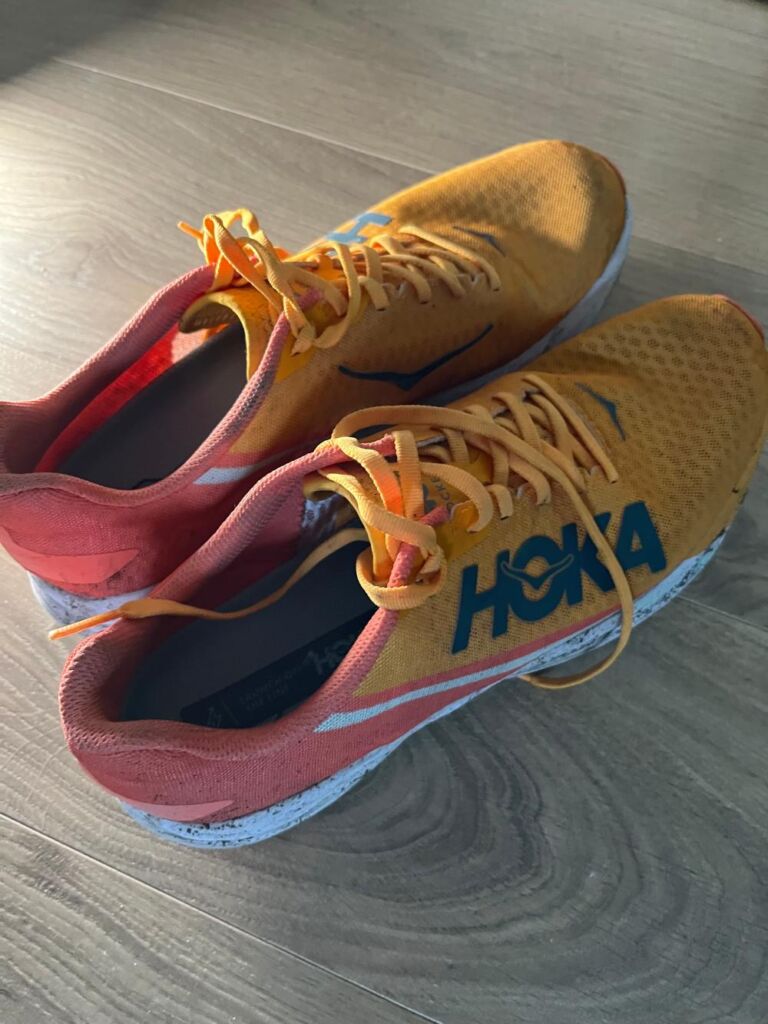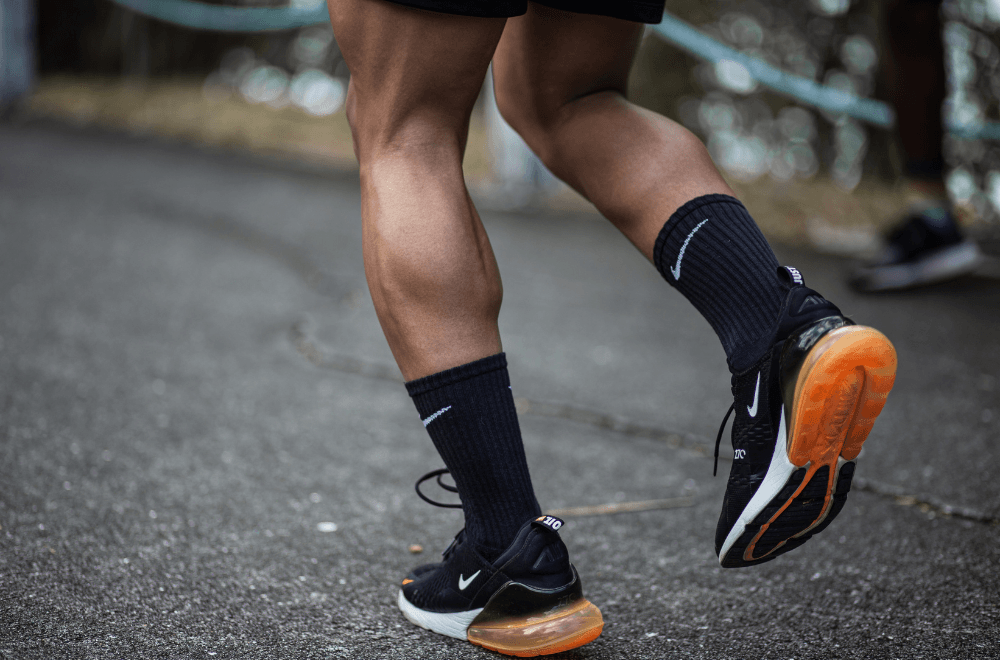Nike vs Hoka: which is best for runners and athletes? Our runner finds out!
When it comes to running shoes, Nike and Hoka are two of the most popular brands on the market. Both offer a wide range of options for runners of all levels, but they differ in their approach to design and technology. Nike has been a leader in the industry for decades, known for their sleek and stylish designs, while Hoka has gained a following for their maximalist approach to cushioning. Also many runners want an alternative to Nike for a variety of reasons.
One of the biggest differences between Nike and Hoka is their focus on different types of runners. Nike tends to caters to a wider audience, with shoes designed for both casual runners and professional athletes.
Hoka focuses on runners and has been praised for their ability to reduce impact and improve performance over longer distances, specifically ultra marathons.
Nike famously uses materials like its proprietary ZoomX foam and air pockets to provide cushioning. Hoka is known for their maximalist approach to cushioning, using thick layers of its proprietary ProFly foam to reduce impact and provide a more comfortable ride. This approach has been controversial in the running community, with some runners praising the added cushioning and others criticizing it for being too bulky and heavy.
I’ve trained and raced in both Hoka and Nike running shoes. The Hoka shoes tend to be more cushioned and have more durability than Nike. However, Nike shoes can suit more types of runners and their super shoes are a little faster than Nike. For example, I train and complete long runs in the Hoka Clifton and race in the Nike Alphafly. However, that may change with the rollout of the Hoka Rocket X 2.
Both Nike and Hoka offer high-quality running shoes that cater to different types of runners. The choice between the two brands ultimately comes down to personal preference and how you run and your preferred distances.
Contents
Nika Vs Hoka Brand Overview
When it comes to running shoes, Nike and Hoka are two of the most popular brands in the market. Both brands offer a wide range of shoes that cater to different types of runners and their specific needs. Here is a brief overview of each brand:
Nike

Nike is a well-known brand that has been around since 1964. Founded by Phil Knight, they offer a wide range of shoes that cater to different types of runners, from beginners to professionals. Nike is known for its innovative technology and designs that provide comfort, support, and durability. They have a massive consumer base, making their shoes more affordable than some other brands. Knight recounts the story of Nike in his excellent memoir Shoe Dog
He also famously said, “Nike is a marketing-oriented company, and the product is our most important marketing tool.”
Hoka

Founded in 2009 by Jean-Luc Diard and Nicolas Mermoud, Hoka has quickly gained popularity among ultra runners before the wider market. They specialize in maximalist running shoes, which provide extra cushioning to reduce impact on the feet and joints. Hoka shoes are designed for athletes, professionals, and actual runners who want to improve their performance and reduce the risk of injury. They offer a range of shoes that cater to different types of runners, from trail runners to road runners.
When it comes to the price, both brands offer shoes that range between $120 to $300, depending on the model and features. However, Nike tends to be a bit more affordable than Hoka because of its larger consumer base.
Technology Comparison
Nike and Hoka use cutting-edge methods to manufacture their running shoes. However, they have different approaches to their design and construction.
Nike has been a leader in the athletic shoe industry for decades and has developed many innovative technologies. The Nike Air cushioning system uses pressurized air to provide cushioning and support. Another popular technology is Nike React foam, which is lightweight and durable, and provides a responsive feel.
Hoka has a reputation for creating shoes with maximum cushioning and minimum drop. They use their patented Meta-Rocker technology to create a smooth and efficient ride, and their J-Frame technology to provide added stability on the inner, medial side of the shoe to prevent foot rolling inward. In short, the Hoka shoes have a lower drop typically 5mm. It can take a few weeks to adapt to this style of running versus a Nike shoe.
Nike and Hoka have unique technologies that cater to different types of runners. Nike’s focus is on creating lightweight, responsive shoes that are suitable for speed and agility training. Hoka, on the other hand, focuses on creating maximum cushioning shoes that are ideal for long-distance runners.
Fit and Comfort
Nike and Hoka offer a range of options to suit different foot shapes and sizes. However, there are some key differences between the two brands.
Hoka shoes provide more support and stability than Nike shoes, and they have a wider toe box to allow for more comfort. They also have a higher arch support to help with pronation, and they are generally lighter weight. This makes them a great option for runners who need extra cushioning and support. However, the Hoka Mach range of runners have are more suitable for neutral runners who like that close to the ground contact feeling
Nike shoes tend to be more snug and form-fitting, which can be beneficial for runners who prefer a more secure feel. I found the Alphafly particularly narrow. They also offer a range of styles with different levels of cushioning, so runners can choose the level of support that works best for them.
Both brands offer shoes in a range of widths, so runners with wider or narrower feet should be able to find a comfortable fit. Additionally, both brands offer shoes with breathable mesh uppers to help keep feet cool and dry during runs. Bear in mind, keeping your feet cool and isn’t much use if running in wet and cold conditions. Nike sells a shoe to get around that problem: the Pegasus Shield. Hoka also sell a range of popular trail runners
Ultimately, the best shoe for you will depend on your individual needs and preferences. If you need extra support and cushioning, Hoka may be the better choice. If you prefer a more snug and form-fitting shoe, Nike may be the way to go.
Nike vs Hoka Sizing
Hoka shoes tend to run a bit larger than Nike shoes, Additionally, Hoka shoes are known for their wider toe boxes, which can be a relief for those with wider feet or who prefer a more spacious fit. That’s evident on the Clifton range.
On the other hand, Nike shoes tend to have a more narrow fit, which can be beneficial for those with narrower feet or who prefer a snugger feel. This is particularly evident with the supershoes.
I buy my Hoka running shoes half a size up (US 12) from normal shoes as my feet expand slightly during long runs. I also buy my Nike running shoes up half a size due to the narrowness of the super shoes. I wear other Nike shoes in my normal feet size (US 11.5).
Fun fact: I bought a pair of Vaporfly shoes and Nike returned them when I realized they were US 11, even after I ran in them!
Performance Comparison
Nike and Hoka offer high-quality running shoes for runners of differing needs and levels. Here is a breakdown of their key shoes as of 2023:
| Brand | Maximal Cushioning | Traditional Running Shoes | Carbon-Plated Shoes |
| Nike | Nike Invincible Run | Nike Pegasus and Air Zoom | The Vaporfly Next% and Alphafly Next% |
| Hoka | Arahi, Bondi and Clifton | Hoka Mach 5 and Rincon | Carbon X and Carbon X2, Rocket X 2 |
Maximal cushioning shoes provide more cushioning and support for long-distance running, while traditional running shoes offer a more natural feel and are suitable for shorter distances. Carbon-plated shoes are designed to improve running efficiency and are popular among marathon runners.
Both Nike and Hoka offer carbon-plated shoes, but Nike’s Vaporfly Next% and Alphafly Next% are known for their superior performance and have been used by elite runners to break world records. Famously Eluid Kipchoge ran in the Nike Alphafly to smash the two hour marathon barrier.
Hoka’s Carbon X and Carbon X2 are also highly rated and offer a comfortable fit for long-distance running. Its athletes include triathlete Patrick Nilsson and ultra runner Caitríona Jennings
Both Nike and Hoka offer high-quality running shoes that cater to different needs. It’s important to choose a shoe that suits your running style and preferences to ensure optimal performance and comfort. Nike also sells a range of budget friendly running shoes, which you can often find in a bargain bin. I’d avoid these if you take running and training seriously.
Price Comparison
Nike and Hok are comparable for pricing, but Nike super shoes tend to be more expensive. The most popular models for Nike are around $150, and for Hoka, they are also around $150. However, it is important to note prices vary depending on the model and the retailer.
Nike and Hoka offer a wide range of running shoes at different price points. For example, Nike’s budget-friendly options include the Nike Revolution and Nike Downshifter, which are priced at around $60 to $70. On the other hand, Hoka’s budget-friendly options include the Hoka One One Clifton Edge and Hoka One One Rincon, which are priced at around $115 to $120.
The super shoes from both brands (Hoka’s Rocket X vs the Nike Alphafly) can set up back upwards for $250 for Hoka and $300 for Nike. That’s a lot considering these shoes have low mileage versus normal running shoes.
While the price is a factor when choosing running shoes, remember cheap shoes could cost you later in physio bills! The right pair of running shoes should provide the necessary support and comfort for the individual’s foot type and running style.
Nika vs Hoka: The Final Word
After reviewing and comparing Nike and Hoka running shoes, both brands offer high-quality options for runners. The choice between the two comes down to personal preference and individual needs.
Those who prioritize speed and agility may prefer Nike running shoes, which are known for their lightweight design and responsive cushioning. On the other hand, runners who are looking for maximum comfort and support may prefer Hoka shoes, which are known for their thick, plush cushioning and stability features.
I train in Hoka as they last longer and are more comfortable, but I raced the New York city marathon in Nike Vaporfly super shoes as I find them faster. However, I intend to complete my next triathlon in the newly released Hoka Rocket X 2.
However, that’s all down to my preferences as a runner and my gait. The best way to determine which brand and shoe model is ideal, try them out for yourself. Visit your local running store and try on several different options to see which feels the most comfortable and supportive for your feet. The brands also have generous return policies so you can take them for a quick run and return the pair you dislike. That’s what I did.



